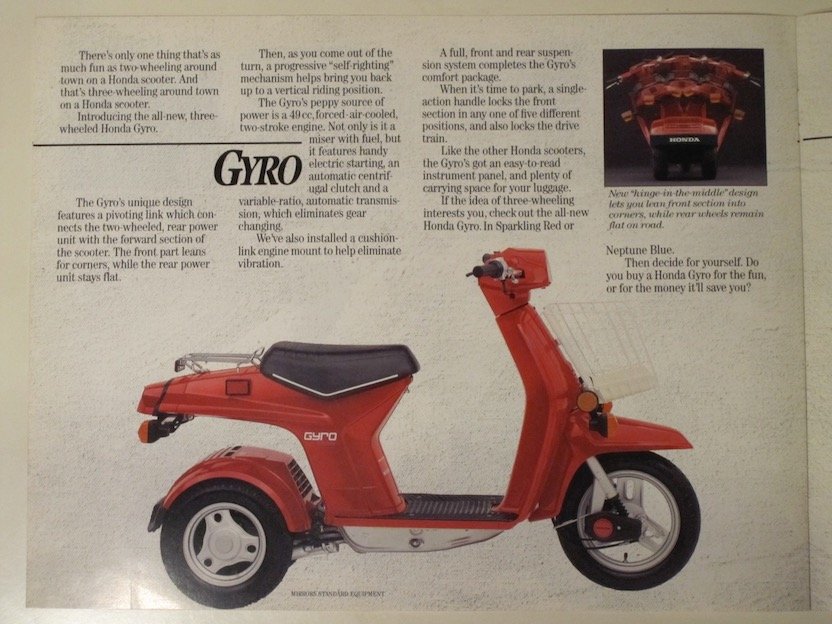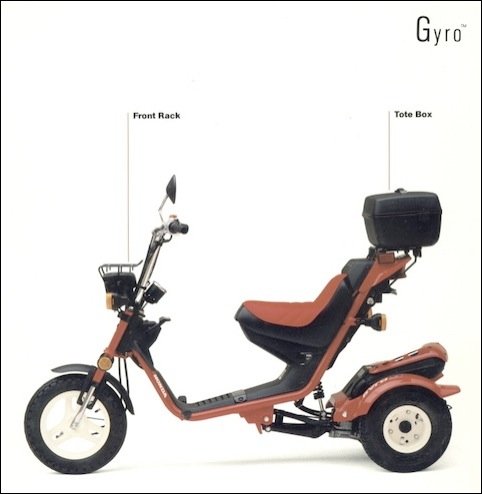HONDA GYRO (NN50, TG50)
Honda introduced the Gyro in Japan in 1982. In Japan, the Gyro name refers to Honda’s family of seven tilting three wheeled scooters, some of which are still on sale. The Honda Gyro’s name is actually an acronym for ‘Great Your Recreation Original’. Obviously something was lost in translation. All of these scooters used a linkage to allow the main part of the scooter to lean while the engine and dual rear wheels remain planted on the road.
The Gyro was sold in America from 1984 – 1986 and in Canada for just 1984. Over these three years, Honda sold two different members of the Gyro family to Americans. The first Gyro was named simply that, while the second Gyro sold ’85 – ’86 was badged the Gyro S.
 Models
Models
It was the NN50 version (called the ‘Just’ in Japan) that arrived in North America for 1984 as simply the Gyro (pictured in blue with optional basket). Besides having three wheels, this model featured styling similar to Honda’s other scooters at the time. As it was only sold for one year and didn’t sell well then, the NN50 Gyro is quite a rare scooter and certainly a prized find for an enthusiast. NN50’s typically sell for $800-$1500 but exceptional examples can go for much more.
For 1985 Honda USA kept the Gyro name but switched the actual model to the exposed frame TG50 (shown left), which was sold under the ‘Road Fox’ name in Japan. For the USA market this scooter received a few minor tweaks and it was named the ‘Gyro S’. Mechanically both Gyro’s were very similar, but the styling is quite different. The exposed tube frame was a first in the Gyro series and made for quite a different look.
Motor
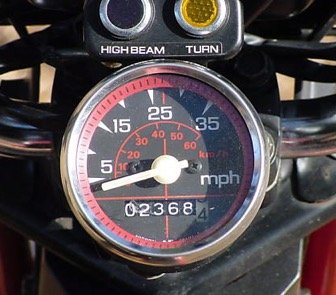
While details are scarce, this motor does share a few components with the Aero 50’s (NB50) engine (AF05E). You may also be able to find some parts from Honda’s Spree scooters. These two scooter engines formed the general basis for virtually all of Honda’s 50cc 2-stroke scooters until the 90’s. Unlike those scooters, the Gyro used a 2-speed automatic transmission rather than a CVT (Aero 50) or single speed (Spree). To dig a little deeper, check out HondaSpree.net which is a great resource on all small Honda scooters including the Gyro.
 Design and Amenities
Design and Amenities
In Japan, the NN50 Gyro had a handy glovebox but for the USA market Honda unfortunately removed this storage space. The Gyro S obviously doesn’t have a glovebox either, so there was no enclosed storage in any of the Gyro’s sold in North America.
The Gyro featured a ‘one touch parking lock mechanism’ to lock the scooter while parked. This lever locked the tilt in one of five positions and it also locked the rear wheels. Accordingly, Honda felt no need to equip this scooter with a centerstand or sidestand. In Japan (and perhaps North America) Honda sold an optional windscreen for the Gyro.
Honda did sell a few neat accessories for the Gyro (shown at bottom of page). They sold a front basket for the earlier NN50 Gryo and they sold a rear ‘tote box’ and front rack for the later Gyro which are shown below. The tote box appears to be the same tote box that Honda also sold for their Elite 50, Spree and Aero 50 scooters.
Discussion
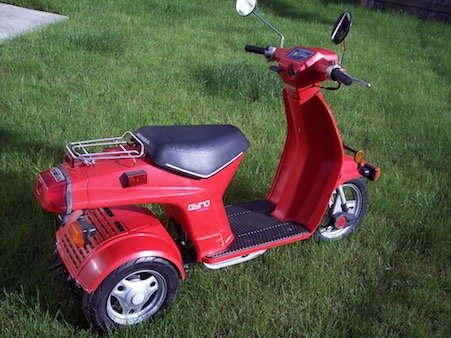
Both Gyro’s offered okay performance for their time with a top speed around 30mph. By today’s standards that’s pretty slow but it did make for a moped law compliant ride. Given its slow speed and minimal storage, the Gyro isn’t the most practical scooter for putting around town but it might be the most fun. If you’re after something unique and fun, then a Gyro is an amazing pick up.
 Pros:
Pros:
- 100% unique
- Blast to ride
- Honda reliability
Cons:
- Slow (30mph)
- Few aftermarket parts
- No storage space
- Rear tires are tough to get
Links:
Honda Gyro NN50 Service Manual – A gold mine of info for your NN50
Honda Gyro TG50 Service Manual – If you have a TG50, download this.
MotorscooterGuide Forums – Visit the forum on this site to chat about your scoot.
Here is a neat YouTube video showing the Gyro’s pivoting mechanism.
Here is a nice video walk around of an ’84 Gyro.
Check out the Gyro entry on Wikipedia here for more info on the complete Gyro series sold in Japan.
Colors:
- 1984: Sparkling Red, Neptune Blue
- 1985: Black, Matte Black
- 1986: Monza Red, Matte Black
Key Specs:
- Engine: TB08E 49 cc air-cooled 2-stroke
- NN50 Power: 3.7 hp @ 6000 RPM, 3.4 lbs-ft torque @ 5000 RPM
- TG50 Power: 4.0 hp @ 6000 RPM, 3.5 lbs-ft torque @ 5500 RPM
- Bore & Stroke: 41 mm x 37.4 mm
- Carb: 13mm slide carb
- Compression Ratio: 7.2:1 (NN50)
- Ignition: CDI
- Transmission: 2-speed automatic transmission
- Tires: 2.75-10-2PR (front), 3.00-8-2PR (rear)
- Brakes: Drum (front and rear)
- Curb Weight: 127.8 lbs / 58 kg (NN50), 139lbs / 63 kg (TG50)
- Fuel capacity: 3.2 liters, 0.8 gallons
- Headlight: 30W/30W, 12 volt
- Starting: Electric start
- Length: 59.9” (NN50), 62.8” (TG50)
- Width: 24.4” (NN50), 23.8” (TG50)
- Height: 37.2” (NN50), 36.0” (TG50)
- Wheelbase: 42.5” (NN50)
- Seat Height: 27.4” (NN50)
- Pivot Lean: Up to 40 degrees
- Colors (NN50): Sparkling Red, Neptune Blue
- MSRP: $548

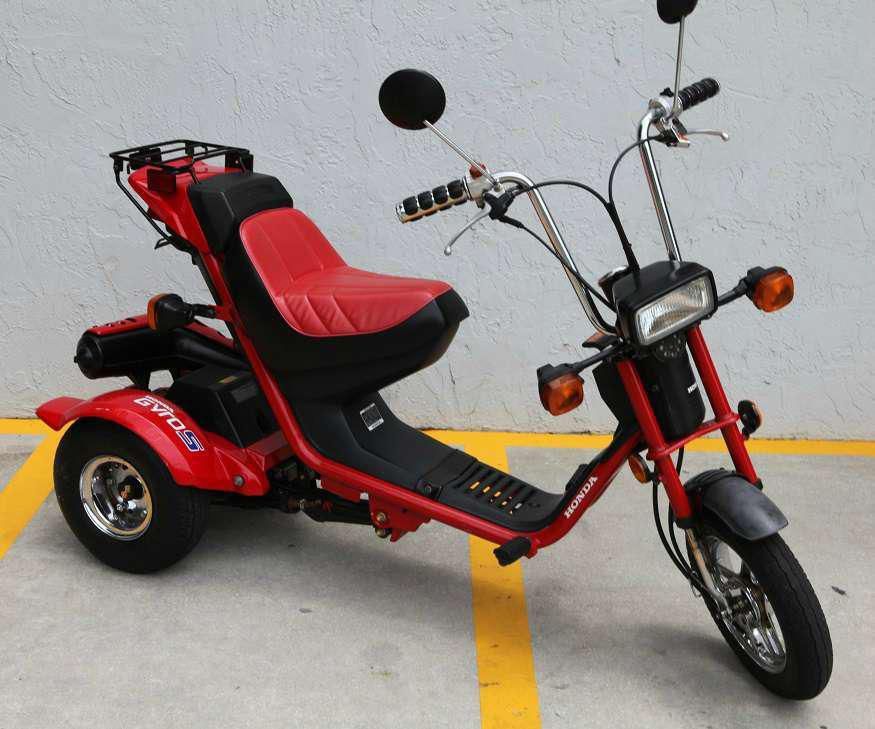
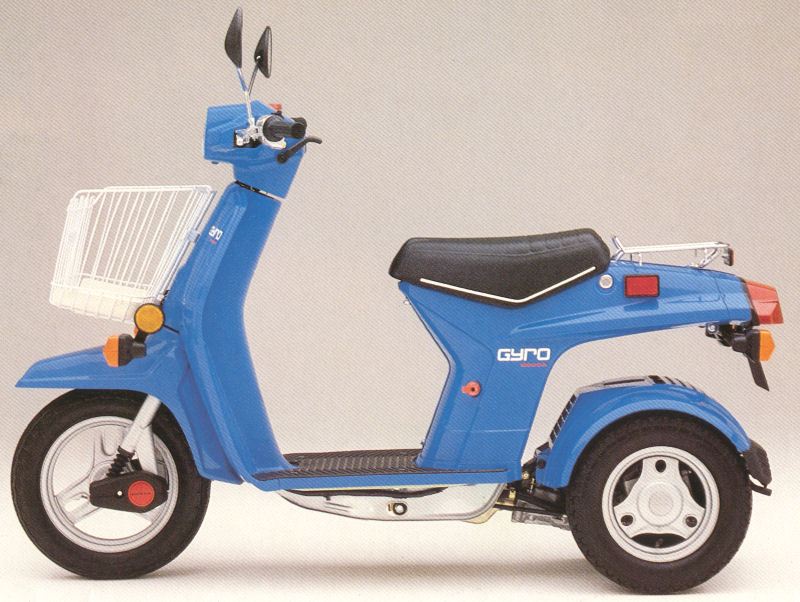
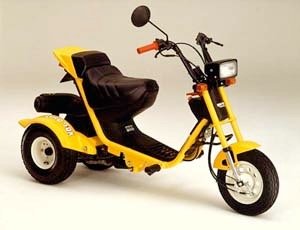 Models
Models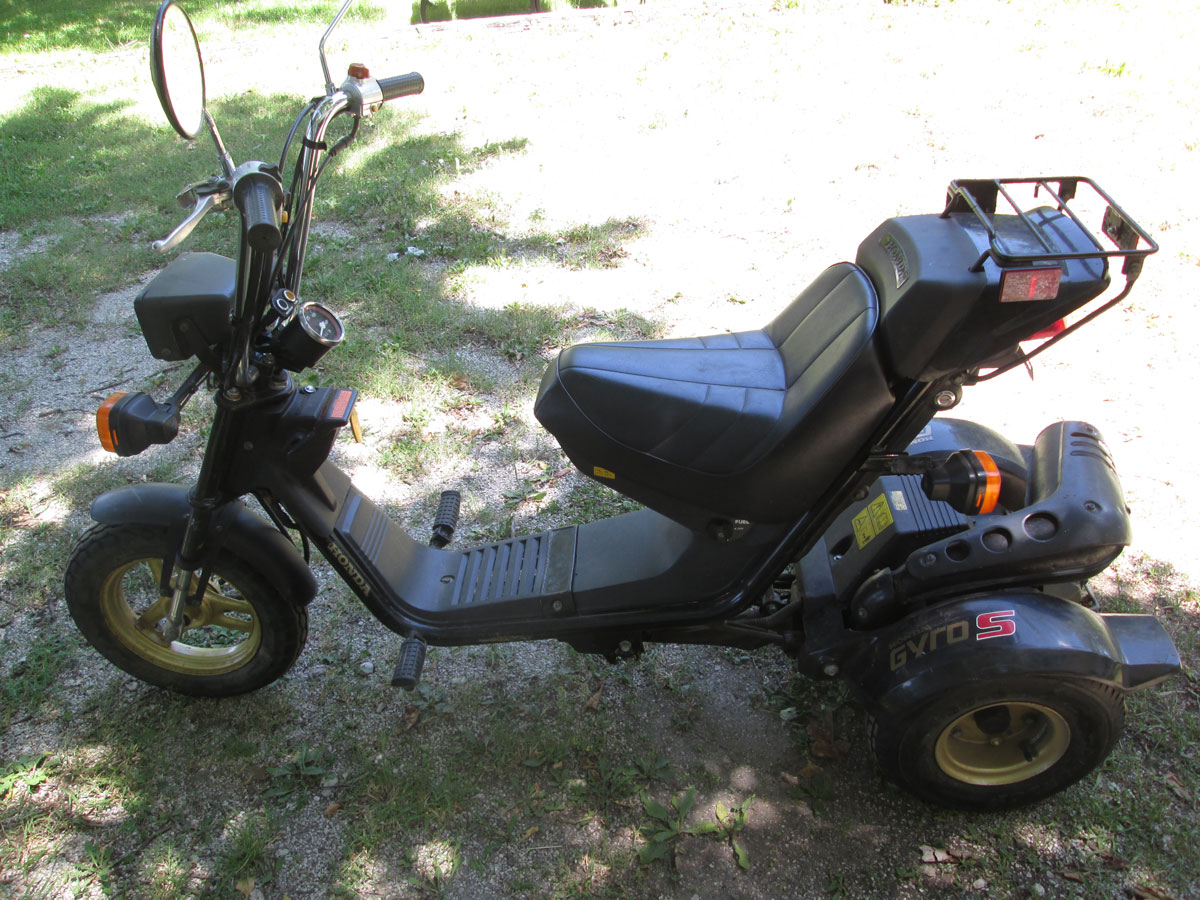
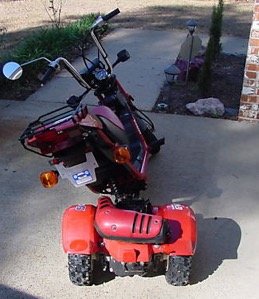 Design and Amenities
Design and Amenities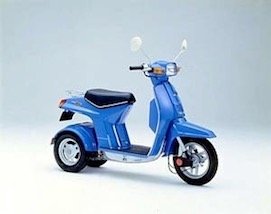 Pros:
Pros: